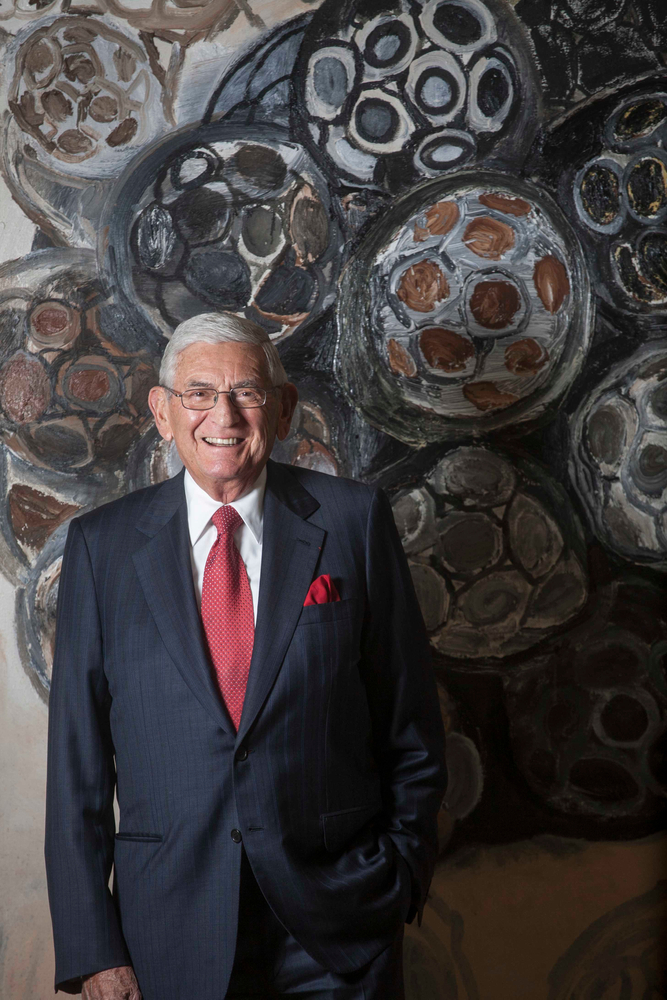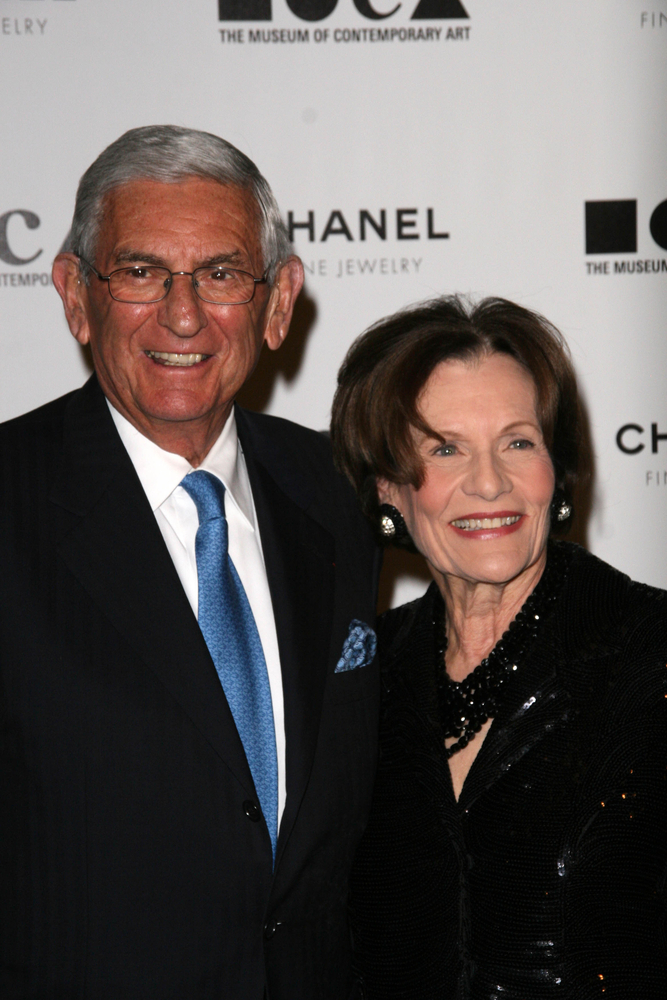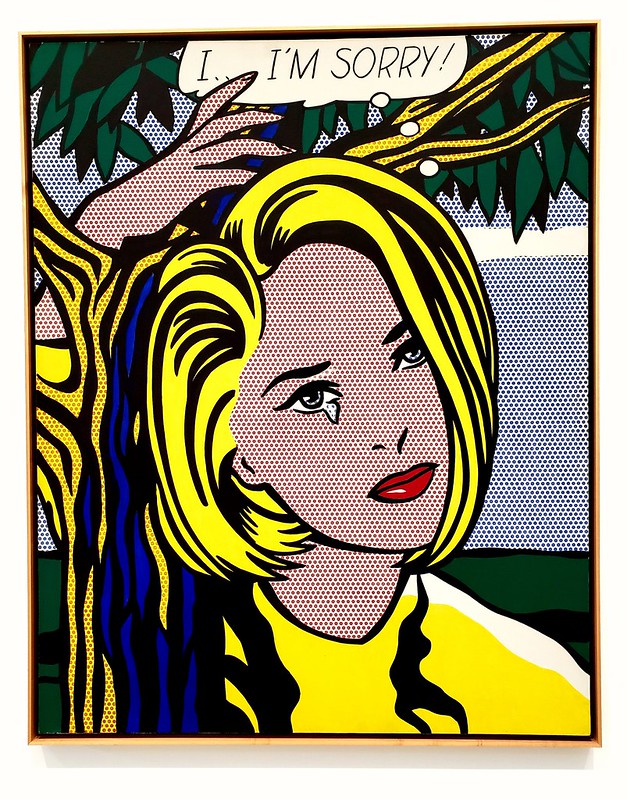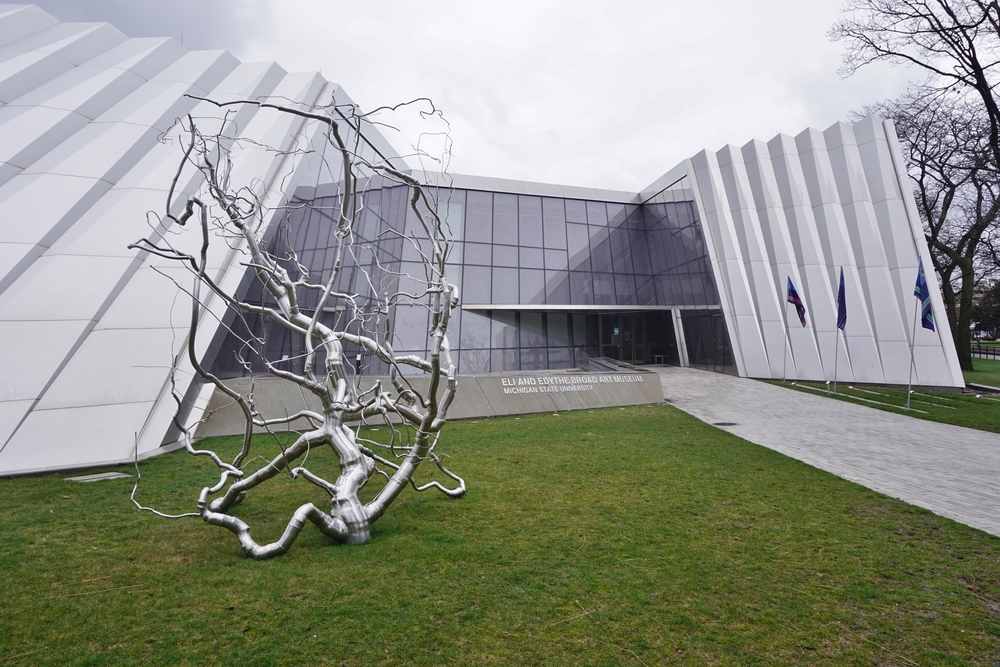Eli Broad: the unreasonable collector
[25.05.2021]“The reasonable man adapts himself to the world; the unreasonable one persists in trying to adapt the world to himself. Therefore, all progress depends on the unreasonable man” George Bernard Shaw.

Eli Broad made this maxim his own; he even alluded to it in the title of his autobiography / success manual published in 2012, The Art of Being Unreasonable. The quote was reproduced on a paperweight that his wife Edye had given him. His adherence to “unreasonable thinking” led him to create two Fortune 500 companies as well as a new approach to philanthropy. This approach has contributed to improved access to school education for disadvantaged communities, funding for scientific research institutes and some of the largest Contemporary Art museums in the world. For five decades, the co-founder of the real estate group Kaufman & Broad and SunAmerica was one of the primary driving forces of the Los Angeles art scene, with a fortune estimated by Forbes magazine at $6.9 billion (approx. 5.7 billion euros). The American collector and patron of the arts died on 30 April 2021 in his hometown at the age of 87.
Eli Broad, the American dream
Born in New York on 6 June 1933, Eli Broad was the son of a seamstress and a Lithuanian Jewish immigrant, owner of “five-and-dime” stores in Detroit. His father, anxious to blend in with his new homeland, changed the original surname from Brod to Broad, and the young Eli grew up with a distinct desire to stand out in life. Already, aged 13, he cut stamps from envelopes and sold them to stamp collectors across the continent. At 16, he raised enough pocket money to pay $600 for a 1941 Chevrolet. He subsequently studied accounting at the Michigan State University and in 1956, aged 23, he launched his first large business with $12,500 borrowed from his stepfather. His partner Donald Kaufman also came from the family: he was his wife’s cousin by marriage. He built houses and their new business, KB Home, successfully accompanied the upward curve of home-ownership in post-war America, with standardized, cheap single-family homes. The firm was a huge success. In 1963, the young millionaire moved the company to Los Angeles. Tireless, he developed financial services tailored to the needs of owners. His other company SunLife, which sold retirement insurance to baby boomers, was also successful. In 1999, when the insurer merged with multinational AIG for $18 billion, $3 billion went to Broad’s personal bank account. He retired that year to devote himself full-time to his art collection.
The collection: “Life is richer when you live it among the dreamers“

In the beginning, it was his wife Edythe who was the main art lover! In Los Angeles in the 1970s she regularly visited galleries like Ferus and Nicholas Wilder and acquired her first works on paper. “When I was on business trips abroad, she would buy lot of prints. One day, she bought a beautiful TOULOUSE-LAUTREC poster which I recognized. It made me curious” remembered Eli Broad in 2016. From then on, their purchases acquired another dimension: in 1972, he bought a first Vincent VAN GOGH (1853-1890) drawing from his Arles period and then the collection started to grow quickly with a number of major signatures like MIRO, MATISSE, MODIGLIANI. As the 1887 Van Gogh drawing was very fragile, it could not be easily exhibited and the Broads soon exchanged it for a blood red panel by Robert RAUSCHENBERG (1925-2008), Red Painting. In fact, they never bought 19th century art again.
The couple refined their tastes, focusing on Post-War and Contemporary art, and chasing the very latest works by living Contemporary artists. For Eli Broad, known for being a tough negotiator, this strategy was a way of limiting purchase prices. He was among the first to purchase Cindy SHERMAN’s conceptual photographs for $150 each, first seen in the basement of the Metro Pictures gallery in New York City (Untitled # 96 from 1981 sold for $3.89 million at Christie’s in 2011). In the 1980s, the Broads acquired works by leading L.A. artist Ed RUSCHA, New York painters Jean-Michel BASQUIAT and Eric FISCHL and the German Neo-Expressionist Anselm KIEFER.
Eli and Edye spent decades scouring auctions, galleries and visiting international art fairs. But they prefered to form personal relationships with artists, spending long moments in their studios and inviting them to their sumptuous home in Brentwood CA. “Collecting is not just about buying beautiful objects. Getting to know artists, seeing how they perceive society, is a great and fun experience.”

Eli Broad had a very personal way of collecting; in 1994 he caused a minor sensation in the closed world of auction sales by buying a 1965 Roy LICHTENSTEIN titled «I… I’s sorry» for $2.5 million with a credit card. Back then buying a work of art with an American Express card was unprecedented and largely depended on the buyer’s credit rating! This subsequently became the rule… until the recent use of cryptocurrency introduced yet another way of acquiring art. The couple also innovated by signing contracts directly with artists like Jeff KOONS for example, to acquire works, even before their creation. These experimental methods favored the growth of an immense collection, even if certain critics have noted its uneven quality in terms of the artists represented. Eli Broad had an instinct to seek a good deal at all costs… in business and in art. His collection of 28 paintings and drawings by Andy WARHOL, for example, does not distinguish between the artist’s brilliant work in the 1960s and the less innovative pieces of the late 1970s. That said, the Broad collection is universally recognized as containing a large number of museum quality works.
The Broads generously shared their collection and founded the Broad Art Foundation in 1984 to organize loans of their masterpieces. Over the following years, the foundation lent nearly 9,000 works to more than 550 museums and galleries around the world. But that didn’t stop them running out of space! Deploring the hundreds of works that were lying in dark storage spaces for lack of somewhere to exhibit them, the Broads started thinking about the construction of a museum.
The “Lorenzo De Medici” of Los Angeles (Connie Bruck, The New Yorker 2010)
In the 1960s, when the Broads moved there, Los Angeles was not exactly a cultural hotspot: no opera, no ballet company or even a large-scale theater. There was however a growing group of artists like John BALDESSARI, Ken PRICE, Larry BELL among others, but their work was being promoted by New York galleries. The LACMA did not become an independent institution until 1965 (thanks to the entertainment industry), almost a century after the Metropolitan Museum. The local attitude towards Contemporary art was at best circumspect, at worst scandalized.
Fifty years later… the city is unrecognisable! THE BROAD, the museum housing Eli and Edye’s collection, opened its doors with great fanfare on Grand Avenue in September 2015 with a 49-piece orchestra and an inaugural speech by Bill Clinton. The inaugural exhibition featured work by over 60 artists, mostly Americans, Germans, and a few Britons (including Damien HIRST and Jenny SAVILLE, but not Lucian Freud, Francis Bacon, Peter Doig or even, David Hockney [despite the California connection]). 11,000 m² was devoted to 42 works by Jasper JOHNS and 19 by Cy TWOMBLY. Jeff Koons had a hall to himself and Yayoi KUSAMA’s work occupied three adjacent halls. All the stars of Modern and Contemporary Art were present, Christopher WOOL, Glenn LIGON, Takashi MURAKAMI, etc. But the couple was very clear in their communication: THE BROAD is their museum; it reflects their personal tastes, not the reasoned decisions of an institutional committee. Eli likened their collection to a massive gamble: “We didn’t know what would happen with BASQUIAT or Keith HARING when we bought them. People now say they were trophies. They sure weren’t trophies at the time”

Today, Eli Broad has passed away, but his name is writ large all over Los Angeles: at the Museum of Contemporary Art (MOCA), of which he was the co-founder and for a long time one of the main donors; at the Los Angeles County Museum of Art (LACMA) as well, which also manages the Broad Contemporary Art Museum… and at UCLA, which since 2006, has a Broad Art Center. And of course there is now the private museum, THE BROAD. In short, driven by strong personal ambitious, Eli Broad had an incredible talent for going straight to the point, and it has transformed the cultural landscape of America’s West Coast.




 0
0
